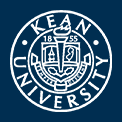Files
Download Full Text (3.6 MB)
Description
Julia Ursin Niemcewicz wrote from New York to John Kean, her brother, addressed to Highland School, Putman County, NY. She told him that their mother, Sarah Sabina Kean planned to visit her soon and that she heard Benjamin Onderdonk was named the new Bishop.
Morris Robinson, Miss Proctor, Hanny James, Philly Valence, Cousin Mary, Mrs. LeRoy
Author/Creator
Julia Ursin Niemcewicz Kean, later Julia Ursin Niemcewicz Fish (1815-1887)
Recipient
John Kean (1814-1895)
Creation Date
10-13-1830
Document Type
Manuscript
Location
New York, NY
Inventory Location
Bay 1, Column 2, LHC Series 3
Recommended Citation
Kean, Julia U.. Julia Ursin Niemcewicz Kean to John Kean, October 13, 1830. Manuscript. From Special Collections Research Library and Archive, Kean University, Liberty Hall Collection 1830s. https://digitalcommons.kean.edu/lhc_1830s/35
Rights
This collection is open to the public for research use. Copyright remains with Kean University. Credit this material. Personal photographs may be made for research purposes. Inquiries regarding publishing material from the collection should be directed to Lynette Zimmerman, Executive Director at the Liberty Hall Academic Center & Exhibition Hall at lzimmerm@kean.edu.
Publishing Repository
Special Collections Research Library and Archive, Kean University



Collection
Liberty Hall Collection, 1711-1847 (bulk 1790-1830)